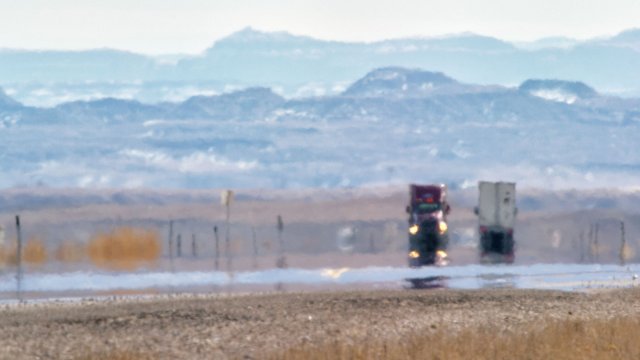Future of Climate Change
Since the Industrial Revolution, human activities have released large amounts of carbon dioxide and other greenhouse gases into the atmosphere, which has changed the earth’s climate. Increasing concentrations of greenhouse gases in the atmosphere have increased the greenhouse effect and caused the earth’s surface temperature to rise. Burning fossil fuels like coal, oil, and natural gas changes the climate more than any other human activity.
Temperatures are expected to continue rising over the coming century. To better understand and plan for the impacts of climate change, scientists use computer models to project future changes. These models consider interactions between the ocean, atmosphere, and land and how conditions may change under different levels of future greenhouse gas emissions. These calculations help give an idea of the things at risk, how the environment will continue to change, and where best to direct our collective action.
The warmer it gets, the greater the risk for more severe changes to the climate. Although it's difficult to precisely predict the timing and magnitude of future climate changes, many observed climate impacts are expected to be amplified with future warming.
You can click the tiles to learn more about projected future precipitation and heat changes and the impacts associated with those changes.
-
Extreme Heat

Extreme heat can threaten lives, disrupt daily activities, and harm agricultural and transportation systems.
-
Extreme Precipitation

Extreme precipitation events can overwhelm infrastructure and threaten people's homes, belongings, and livelihoods.
Future Climate: An Overview
While climate change is happening on a global scale, the impacts are felt locally in our neighborhoods, workplaces, and communities. You can learn more about these impacts in the interactive graphic by clicking the magnifying glasses.
To learn more about climate change impacts, visit the Climate Change Impacts by Sector. To learn more about observed changes, visit Climate Change Indicators.
References
1 Payton, E. A. et al. (2023) Ch. 4: Water. In: Fifth National Climate Assessment. U.S. Global Change Research Program, Washington, DC. doi:10.7930/NCA5.2023.CH4.
2 West, J. J. et al. (2023) Ch. 14: Air Quality. In: Fifth National Climate Assessment. U.S. Global Change Research Program, Washington, DC. doi:10.7930/NCA5.2023.CH14.
3 May, C. L. et al. (2023). Ch. 9: Coastal Effects. In: Fifth National Climate Assessment. U.S. Global Change Research Program, Washington, DC. doi:10.7930/NCA5.2023.CH9.
4 Mills, K. E. et al. (2023) Ch. 10: Ocean Ecosystems and Marine Resources. In: Fifth National Climate Assessment. U.S. Global Change Research Program, Washington, DC. doi:10.7930/NCA5.2023.CH10.
5 Marvel, K. et al. (2023) Ch. 2: Climate Trends. In: Fifth National Climate Assessment. U.S. Global Change Research Program, Washington, DC. doi:10.7930/NCA5.2023.CH2.
6 Domke, G. M. et al. (2023) Ch. 7: Forests. In: Fifth National Climate Assessment. U.S. Global Change Research Program, Washington, DC. doi:10.7930/NCA5.2023.CH7.
7 McElwee, P. D. et al. (2023) Ch. 8: Ecosystems, Ecosystem Services, and Biodiversity. In: Fifth National Climate Assessment. U.S. Global Change Research Program, Washington, DC. doi:10.7930/NCA5.2023.CH8.
